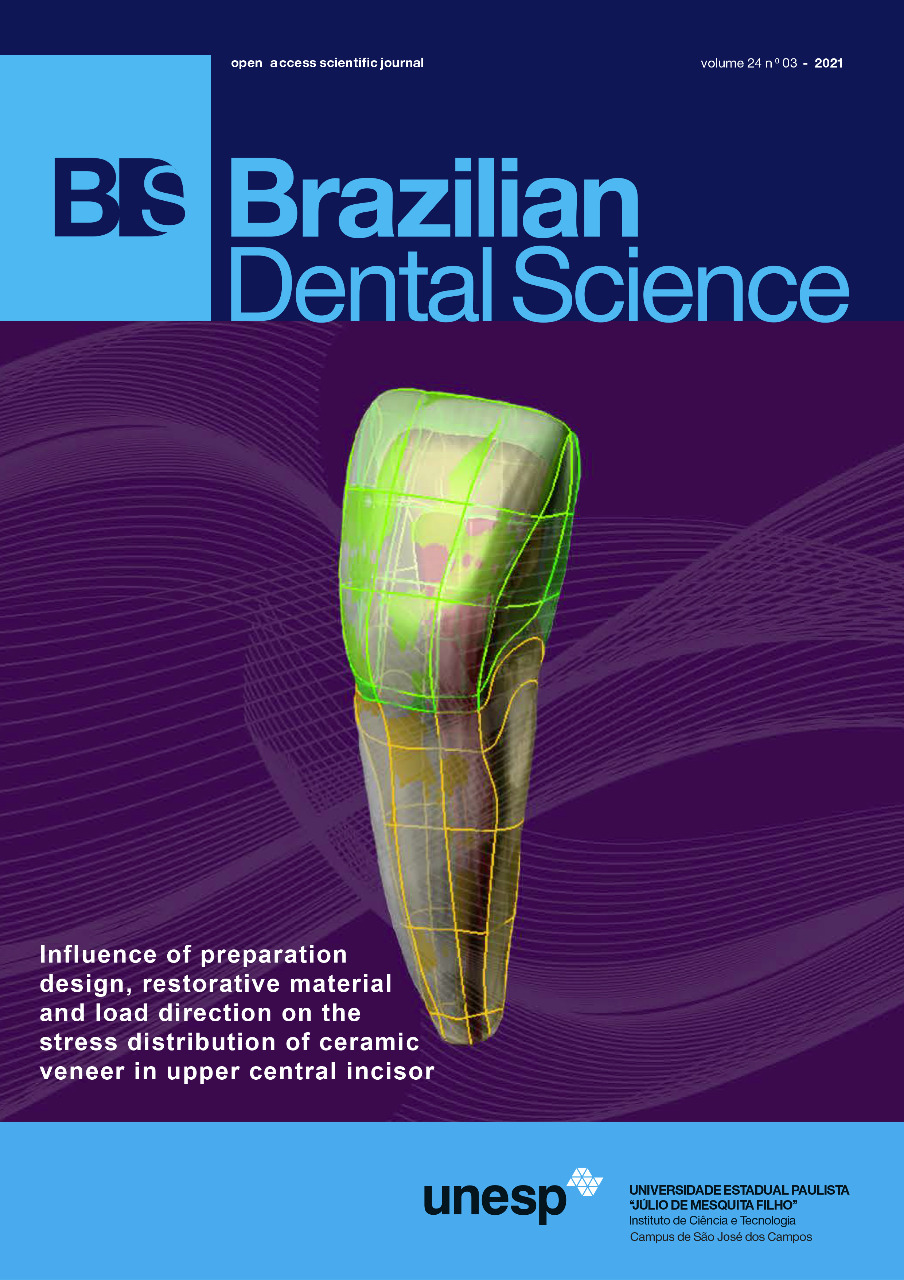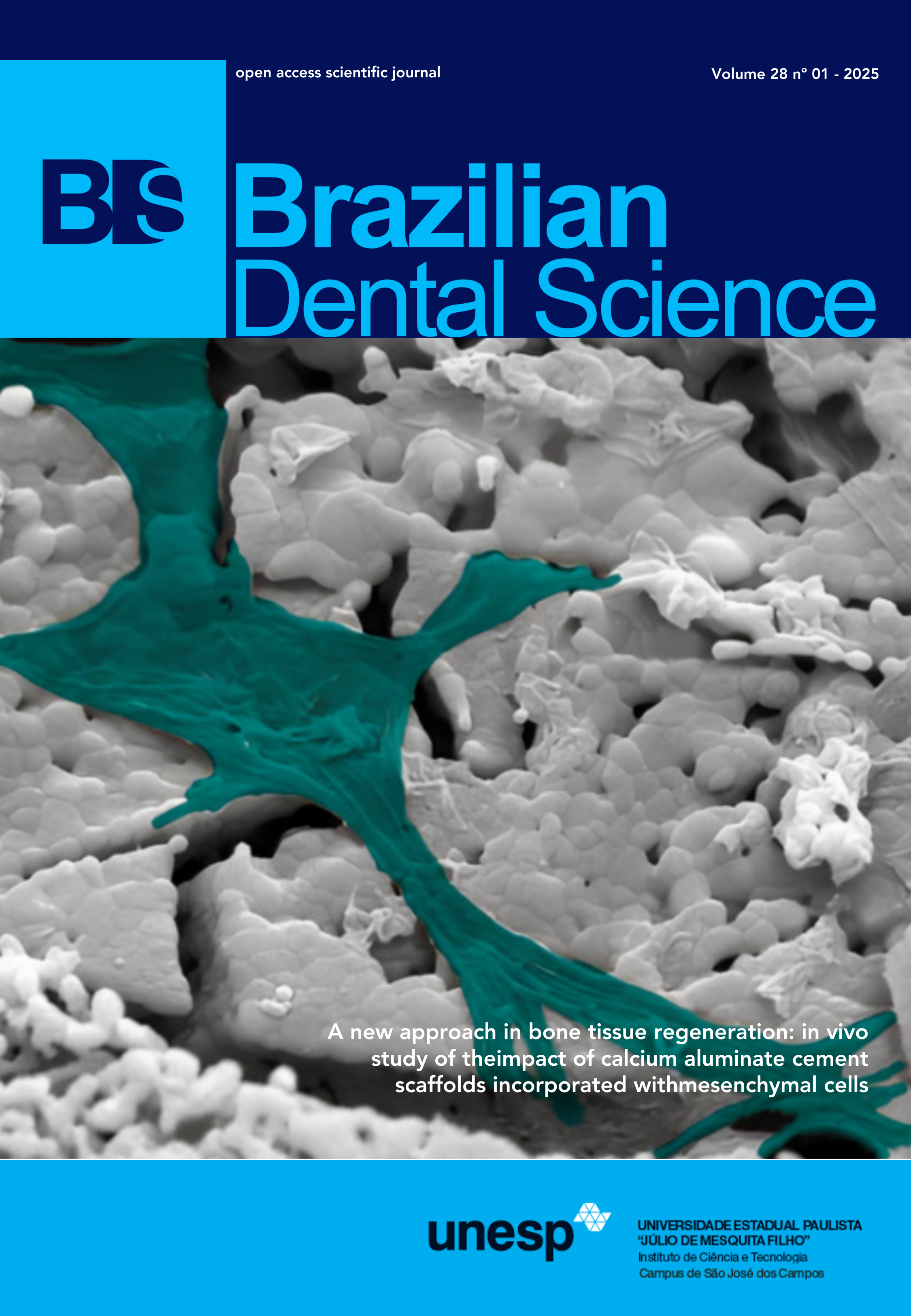Efficacy of fluoride varnishes with different compositions on white spot lesions remineralization
DOI:
https://doi.org/10.14295/bds.2021.v24i3.2478Abstract
Objective: To evaluate the efficacy of different fluoride varnishes on white spot lesions (WSL) remineralization. Material and Methods: Polished bovine enamel specimens were obtained (n = 60) and had their initial surface Knoop microhardness (SMH) determined. WSL were created and the SMH was measured again. Then, specimens were allocated into six groups: C – Control (without varnish); BF – Bifluorid 12 (6% NaF + 6% CaF2); DP – Duraphat (5% NaF); PF – Profluorid (5% NaF); FP - Fluor Protector (0.2% NaF + 0.9% difluorsilane); CW - Clinpro White Varnish (5% NaF + 5% TCP). After varnishes application, specimens were immersed in artificial saliva for 24 h. Then, pH-cycling was performed for 8 days and SMH was measured. Data were analyzed by one-way ANOVA and Tukey’s test. Results: Non-significant differences were observed among the groups at baseline (p = 0.187) and after WSL formation (p = 0.999). After treatments, significant differences were observed among the groups (p = 0.001). Mean % of alteration (SD) and results of Tukey test were: C- 92.40 (12.10)a; PF- 88.66 (10.66)a; FP- 85.90 (14.49)ab; BF- 67.85 (17.86)bc; CW- 66.60 (18.48)c; DP- 58.62 (8.69)c. Conclusion:. Bifluorid 12, Clinpro White Varnish, and Duraphat showed higher efficacy than artificial saliva in promoting the remineralization of WSL, nevertheless, none of the treatments were able to recover sound enamel baseline microhardness.
Keywords
Dental caries; Fluoride; Fluoride varnishes.
Downloads
Downloads
Published
How to Cite
Issue
Section
License
Brazilian Dental Science uses the Creative Commons (CC-BY 4.0) license, thus preserving the integrity of articles in an open access environment. The journal allows the author to retain publishing rights without restrictions.
=================
COPYRIGHT TRANSFER AND RESPONSIBILITY STATEMENT
(PDF)
For all articles published in the BDS journal, copyright is retained by the authors. Articles are licensed under an open-access Creative Commons CC BY 4.0 license, meaning that anyone may download and read the paper for free. In addition, the article may be reused and quoted, provided that the original published version is cited. These conditions allow for maximum use and exposure of the work while ensuring that the authors receive proper credit. All metadata associated with published articles is released under the Creative Commons CC0 Universal Public Domain Dedication.
Before the submission, authors must obtain permission to reproduce any published material (figures, schemes, tables, or any extract of a text) that does not fall into the public domain or for which they do not hold the copyright. Permission should be requested by the authors from the copyright holder (usually the Publisher, please refer to the imprint of the individual publications to identify the copyright holder).
The authors hereby attest that the study is original and does not present manipulated data, fraud, or plagiarism. All names listed made a significant scientific contribution to the study, are aware of the presented data, and agree with the final version of the manuscript. They assume complete responsibility for the ethical aspects of the study.
This text must be printed and signed by all authors. The scanned version should be submitted as supplemental file during the submission process.



